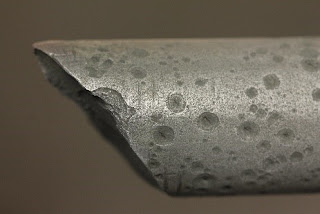Sucker Rod and Carbon Fibre Rod at a Glance
When it comes to sucker rods, you have two main options: a conventional sucker rod or a carbon fibre rod. By understanding what each is and what it is used for, you can make an informed decision about which would be better-suited for your situation.
Conventional Sucker Rod
A conventional sucker rod is a steel rod measuring between 7 and 9 metres. Sucker rods come in an array of sizes, making them suitable for various RRP and PCP applications.
Sucker rods are usually used in conjunction with sucker rod guides. These are made from plastics with high-performance additives to increase strength, reliability, and production performance. Guides decrease contact of the metal of the sucker rod with the metal of the tubing, therefore increasing the lifespan of the tubing.
Rod guides come in a few different forms, allowing you to choose the right option for you according to application and whether you need paraffin removal or protection against wear. Options include:
- High flow twisted, for highly-deviated wells. This minimizes paraffin buildup.
- Straight vane, for reciprocating in low corrosion environments. It reduces fluid turbulence.
- Extended straight vane, for reciprocating in high-volume wells. This features a wider vane to better distribute load and improve protection from wear.
- ShurSpin, for cavity pumping. This is able to lower hydraulic resistance and mechanical friction, leading to less torque.
Carbon Fibre Rod
A carbon fibre rod uses modern technology to improve upon the design of the conventional sucker rod. This results in lighter, smaller rods that offer a higher level of protection from corrosion, temperature, and fatigue. Carbon fibre rods also have steel end fittings to increase strength and reliability further. These steel end fittings are extensively tensile tested before assembly.
A top benefit of a carbon fibre rod is its increased production capabilities. Thanks to the greater strength and lower weight, there is less demand on the pumping unit. This means that pump size and speed as well as stroke length are able to increase. Plus, you can lower the pump for increased inflow.
If you decide to opt for a carbon fibre rod, there is no need to change your existing service equipment. You can install a carbon fibre rod with a conventional rod rig and it is easy to fish the carbon fibre rod with common overshot tools. In fact, you may even be able to downsize your surface equipment to decrease expenses.
Conventional sucker rods may be sufficient for your needs, particularly if there is a suitable sucker rod guide available to prevent any potential problems. However, if you want to increase production from deeper wells, carbon fibre rods are something that you need to consider.

Comments
Post a Comment